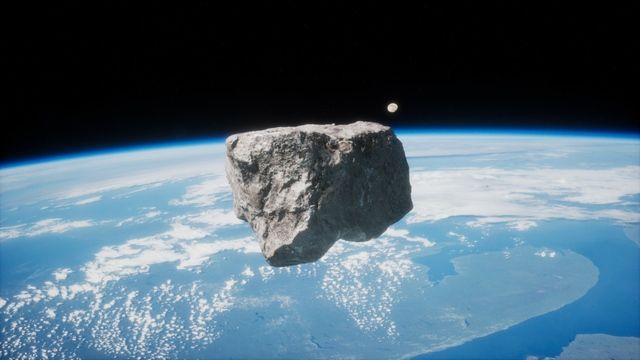NASA monitors Apollo group asteroid, averts threat to Earth
Today, April 1, 2024, the Earth witnesses a close encounter with an asteroid, as confirmed by the National Aeronautics and Space Administration (NASA). Utilizing cutting-edge ground and space-based telescopes, NASA has meticulously tracked the asteroid, named 2024 FQ3, highlighting its journey as it approaches Earth. The celestial body, part of the Apollo group of Near-Earth Asteroids (NEAs), is set to pass by Earth at a proximity of 721,000 kilometres—a distance less than twice that of the Earth to the Moon.
The Apollo group of NEAs, named after the colossal 1862 Apollo asteroid discovered in the 1930s by German astronomer Karl Reinmuth, consists of Earth-crossing asteroids with semi-major axes larger than Earth’s orbit. These celestial objects, including Asteroid 2024 FQ3, orbit the Sun and pose potential interest and concern due to their proximity to Earth.
Embed from Getty ImagesAsteroid 2024 FQ3, moving at an impressive speed of about 69,357 kilometres per hour, significantly surpasses the velocity of a space shuttle. Despite its rapid pace, the asteroid, measuring approximately 38 feet in width—comparable to the size of a bus—is not anticipated to impact Earth. NASA has classified it as a Near-Earth Asteroid (NEA) due to its close approach, underscoring the importance of monitoring such celestial bodies.
NASA’s process for tracking asteroids involves the initial detection of a new NEA by its telescopes, followed by astronomers observing and reporting the asteroid’s positions in the sky to the Minor Planet Center. The Center for Near-Earth Object Studies (CNEOS) then analyzes this data to determine the asteroid’s most probable orbit around the Sun, ensuring continuous monitoring of its trajectory and any potential threat it may pose to Earth.
This event underscores the vital role of NASA and its advanced technological capabilities in safeguarding our planet from potential celestial hazards. By keeping a vigilant eye on Near-Earth Objects (NEOs), NASA ensures that any threat posed by space rocks is identified and monitored, ensuring the safety and security of Earth’s inhabitants.

